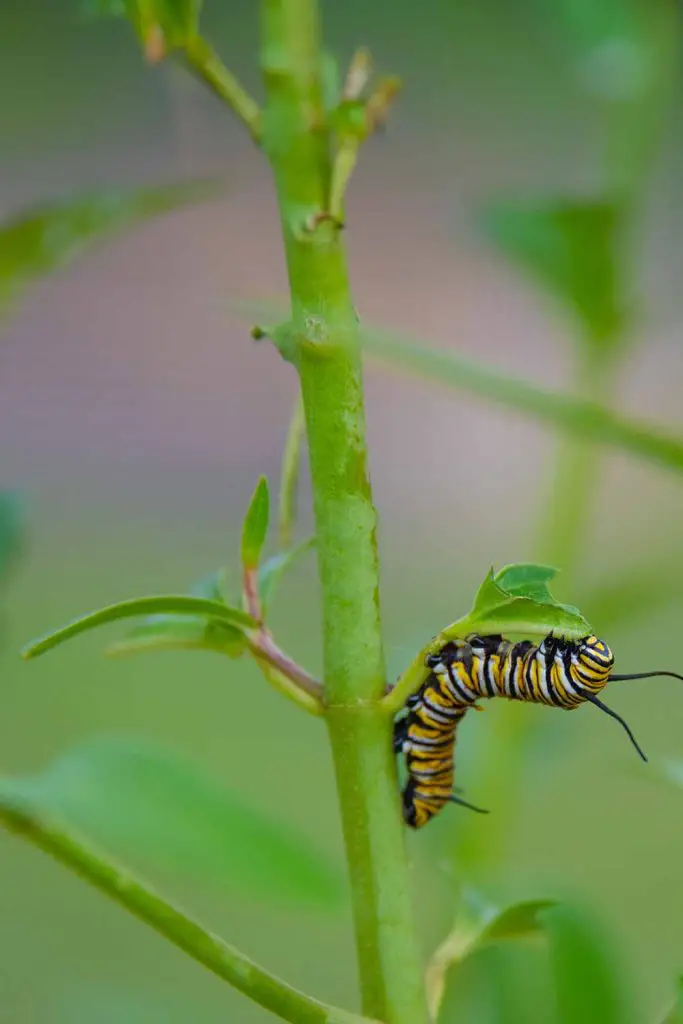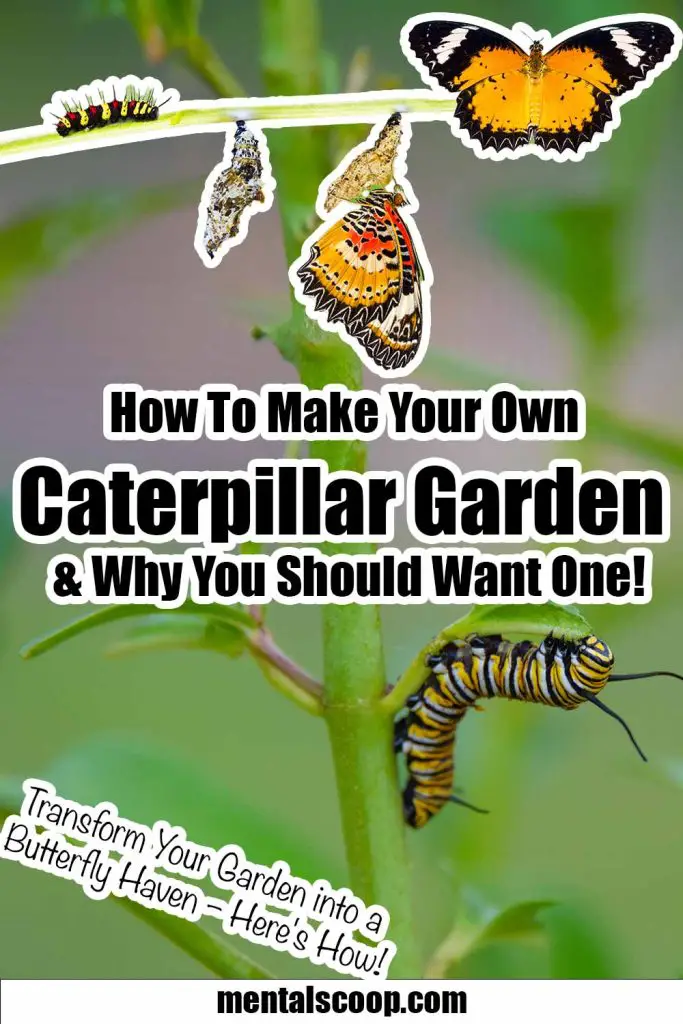How To Make Your Own Caterpillar Garden And Why You Should Want One!

Creating a caterpillar garden is a fantastic way to connect with nature, support local ecosystems, and enjoy the fascinating transformation of caterpillars into butterflies. This guide will take you through the steps of making your own caterpillar-friendly garden, highlighting the benefits and the beauty that comes with it.
Why Caterpillar Gardens Are Important
Caterpillar gardens play a crucial role in supporting biodiversity. By planting a garden that caters to the needs of caterpillars, you’re providing essential habitats and food sources for these creatures.
Caterpillars are the larvae of butterflies and moths, and they require specific host plants to thrive. Without these plants, caterpillars struggle to survive, which in turn affects butterfly populations.
Butterflies and moths are important pollinators, contributing to the health of many ecosystems. By nurturing caterpillars, you’re supporting the entire life cycle of these insects and helping to maintain the balance of your local environment.
Choosing the Right Plants for Caterpillars
The first step in creating your caterpillar garden is selecting the right plants. Caterpillars are picky eaters, with many species only feeding on specific plants. These plants are known as “host plants.” For example, monarch caterpillars exclusively eat milkweed, while black swallowtail caterpillars prefer parsley, dill, and fennel.
Research the native butterfly species in your area and choose host plants accordingly. Native plants are particularly important as they are best suited to your local climate and soil, and caterpillars are more likely to thrive on them.
Some popular host plants include:
- Milkweed (Asclepias spp.) – for monarch caterpillars
- Parsley, Dill, and Fennel – for black swallowtail caterpillars
- Passionflower (Passiflora spp.) – for Gulf fritillary caterpillars
- Spicebush (Lindera benzoin) – for spicebush swallowtail caterpillars
Designing Your Caterpillar Garden
When designing your caterpillar garden, consider the layout, plant placement, and overall aesthetics. A well-planned garden not only benefits caterpillars but also enhances the visual appeal of your outdoor space.
Key design tips include:
- Layering Plants: Create layers of vegetation by planting tall, medium, and low-growing plants. This provides caterpillars with different levels of shelter and food sources.
- Grouping Host Plants: Plant host plants in clusters to make it easier for caterpillars to find them. This also creates a more natural look in your garden.
- Adding Nectar Plants: Include nectar-rich plants like coneflowers, lantanas, and zinnias to attract adult butterflies. This encourages butterflies to lay eggs on your host plants, ensuring a steady population of caterpillars.
Caring for Your Caterpillar Garden
Maintaining a caterpillar garden requires ongoing care, but the rewards are worth it. Caterpillars are vulnerable to pesticides, so it’s important to avoid using chemical insecticides. Instead, focus on organic gardening methods that support a healthy ecosystem.
Tips for garden care:
- Watering: Keep your garden well-watered, especially during dry periods. Healthy plants are more likely to support caterpillars and recover from any damage caused by feeding.
- Weeding: Regularly weed your garden to reduce competition for resources. However, be careful not to remove any wild plants that might serve as additional host plants.
- Pest Management: Monitor your garden for harmful pests, but be mindful that many insects are beneficial or serve as food for other wildlife. Use natural pest control methods, such as encouraging ladybugs and lacewings.
Observing Caterpillars in Action
One of the most rewarding aspects of having a caterpillar garden is watching these fascinating creatures up close. Caterpillars go through several stages of growth, known as instars, before they form chrysalises and eventually emerge as butterflies.
What to look out for:
- Eggs: Female butterflies lay eggs on host plants, usually on the underside of leaves. The eggs are tiny, so you’ll need to look closely to spot them.
- Instars: As caterpillars grow, they molt several times, shedding their skin and entering a new instar stage. Each instar looks slightly different, and some caterpillars change color or pattern as they mature.
- Chrysalises: When caterpillars are ready to pupate, they find a safe spot and form a chrysalis. This stage can last anywhere from a few days to several weeks, depending on the species.
Creating a Safe Habitat for Caterpillars
To ensure that caterpillars thrive in your garden, it’s essential to create a safe environment free from predators and hazards. Birds, spiders, and other insects often prey on caterpillars, so providing shelter is crucial.
How to create a safe habitat:
- Plant Diversity: Plant a variety of species to create natural hiding spots for caterpillars.
- Cover: Incorporate shrubs, grasses, and ground cover to provide shelter from predators.
- Avoiding Pesticides: As mentioned earlier, refrain from using chemical pesticides, as they can harm caterpillars and disrupt the delicate balance of your garden’s ecosystem.
Supporting the Entire Life Cycle of Butterflies
A caterpillar garden does more than just support caterpillars; it nurtures the entire life cycle of butterflies. By including nectar plants, you’re providing food for adult butterflies, encouraging them to stay and reproduce in your garden.
Encouraging butterflies to stay:
- Provide Water: Butterflies need water for hydration. Create a shallow water source, such as a dish filled with sand and water, to attract them.
- Create Sunspots: Butterflies are cold-blooded and need the warmth of the sun to fly. Ensure your garden has sunny spots where they can bask.
- Avoid Disturbing Chrysalises: Once caterpillars have formed chrysalises, resist the temptation to move them. Any disturbance can disrupt the metamorphosis process.
Educating Others About Caterpillar Gardens
One of the joys of having a caterpillar garden is sharing the experience with others. Educating friends, family, and neighbors about the importance of caterpillar gardens can inspire them to create their own, further supporting local ecosystems.
Ways to spread the word:
- Host Garden Tours: Invite others to tour your garden and learn about the plants and caterpillars you’ve nurtured.
- Share on Social Media: Document the growth of your caterpillars and the transformation into butterflies on social media. This can inspire others to start their own gardens.
- Get Involved in Community Projects: Participate in local gardening or conservation projects to promote the benefits of caterpillar gardens.
The Joys and Benefits of a Caterpillar Garden
Creating and maintaining a caterpillar garden is a fulfilling and educational experience. Not only do you get to witness the incredible transformation of caterpillars into butterflies, but you also contribute to the health of your local environment.
Benefits of having a caterpillar garden:
- Biodiversity: Your garden supports a variety of wildlife, from caterpillars to butterflies and other pollinators.
- Education: A caterpillar garden is a great educational tool for children and adults alike, teaching them about life cycles, ecosystems, and the importance of conservation.
- Beauty: The sight of butterflies fluttering around your garden adds a magical touch to your outdoor space.
Creating your own caterpillar garden is a rewarding endeavor that offers numerous benefits. From supporting local wildlife to enjoying the beauty of butterflies, a caterpillar garden is a wonderful addition to any outdoor space.
So why wait? Start planning your caterpillar garden today and experience the joy of nurturing these fascinating creatures.

More interesting articles you may be interested in reading:

